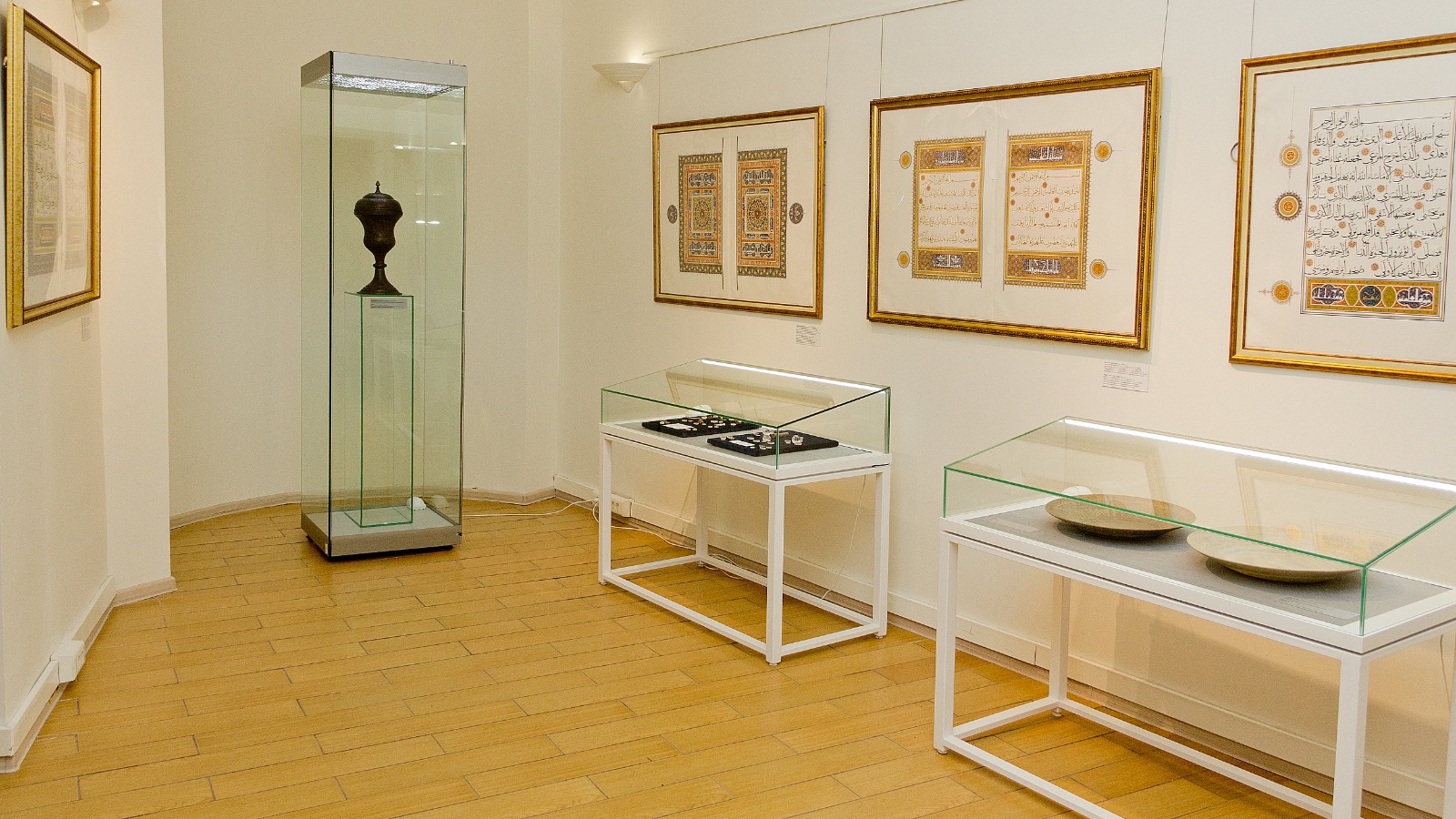About the opening of the exhibition "Rarities of Muslim Culture"

On June 23, the National Museum of the Republic of Tatarstan opened the exhibition "Rare Books of Muslim Culture".
These items reflect the refinement of the East and the depth of ancient traditions, the centuries-old path of Islam and the rich culture of the people for whom it is dear and sacred. A number of exhibits of the exhibition left the museum storage for the first time.
A facsimile of 1905 of the famous Samarkand Kufic Koran - the Koran of Osman - demonstrates what the Holy Scriptures of Muslims looked like during the time of the first caliphs, companions of the Prophet Muhammad. The collection of copies of the Koran "Kazan Basmasy" - the first canonical typographic edition of the Koran - represents the historical book brand of the Tatar people, marked by the catch phrase: "The Koran was revealed in the Hejaz, exquisitely written in Istanbul, skillfully read in Cairo, and first printed in Kazan."
The rarest for Russian museum collections items related to the hajj are fragments of the kiswa, the cover of the Kaaba. At the end of the hajj, the kiswa is cut into small pieces, which are handed out to the pilgrims. Muslims carefully keep these relics in their families, passing them on to their descendants. One such fragment of an unusually large size - more than three meters - entered the museum in 1937 as a gift from a resident of Kazan.
Cases for prayer texts and miniature Korans, bronze dishes with traditional oriental ornaments and arabographic inscriptions, prayer mats with multicolor embroidery are excellent examples of Tatar decorative and applied art. The most interesting layer of folk Muslim culture is Shamaili paintings with religious texts and images of Islamic shrines.
Each item or collection has its own unique history and reflects the development of Islam in the territory of Tatarstan. Many rarities are associated with the names of prominent people. For example, carnelian rosary, which the Tatar scientist and religious figure of the late 19th - early 20th centuries Hasan-Gat Gabyashi received as a gift from Mehmed V Reshad, the penultimate sultan of the Ottoman Empire.
As I said at the opening ceremony. about. Director General of the National Museum of the Republic of Tatarstan Alisa Vyatkina: “Today's exhibition is a small rehearsal before a larger exhibition that we will present next year, the year of the 1100th anniversary of the adoption of Islam in the territory of the region; we are planning to celebrate this significant event ".
The ideological inspirer and main organizer of the exhibition "Rare Books of Muslim Culture", Deputy General Director Lilia Sattarova noted that the last exhibition related to Islam in the main museum of Tatarstan was probably 30 years ago. At the same time, the possibilities of the museum, including in the direction of Islamic culture, are extremely wide, and "next year we will try to show as fully our collections that represent Islam in the Volga region."
“When preparing this exhibition, we had to select items from a huge number of them, and re-attribute many relics,” said Lilia Sattarova. - Employees of the funds, custodians have done a great job. A number of objects were so encrypted in the museum's database that they cannot be immediately recognized as belonging to religion, to Islam. Why? Because the people who handed them over were afraid of persecution. They put these things almost on the doorstep and asked: please take, preserve our culture! "
Among the honored guests was the head of the Spiritual Directorate of Muslims of the Republic of Tatarstan, Mufti of Tatarstan Kamil Hazrat Samigullin. He noted that the culture of the Tatar people is largely alive thanks to religion: “Our culture and traditions have been preserved by mosques and madrasahs. Islam preserves the nation, the nation preserves the religion, and the exhibition reflects this. What we see is both a high level of skill and deepest spiritual meaning. For example, Shamail: you can look at it for at least an hour, studying the inscriptions. "
Archpriest Vladimir Samoilenko, secretary of the Kazan diocesan administration, attended the opening of the exhibition "Rare Books of Muslim Culture". This fact once again reminds that Islam and Orthodoxy on the territory of the region have had civilized relationships for centuries and show a high level of cultural partnership. It is noteworthy that one of the exhibits of the exhibition - an album of Shamails - was donated to the museum in 1941 by Ivan Mikhailovich Pokrovsky, at one time a professor at the Kazan Theological Academy, doctor of church history.
Having conveyed congratulations to the creators of the exhibition from Metropolitan Kirill of Kazan and Tatarstan, who, being on a trip to Moscow, could not personally attend the opening, Archpriest Vladimir emphasized: “The exhibition shows how to love your history, your faith, your shrines - this is an example for everyone! "
Victor Pashkin, employee of the press service of the National Museum of the Republic of Tatarstan